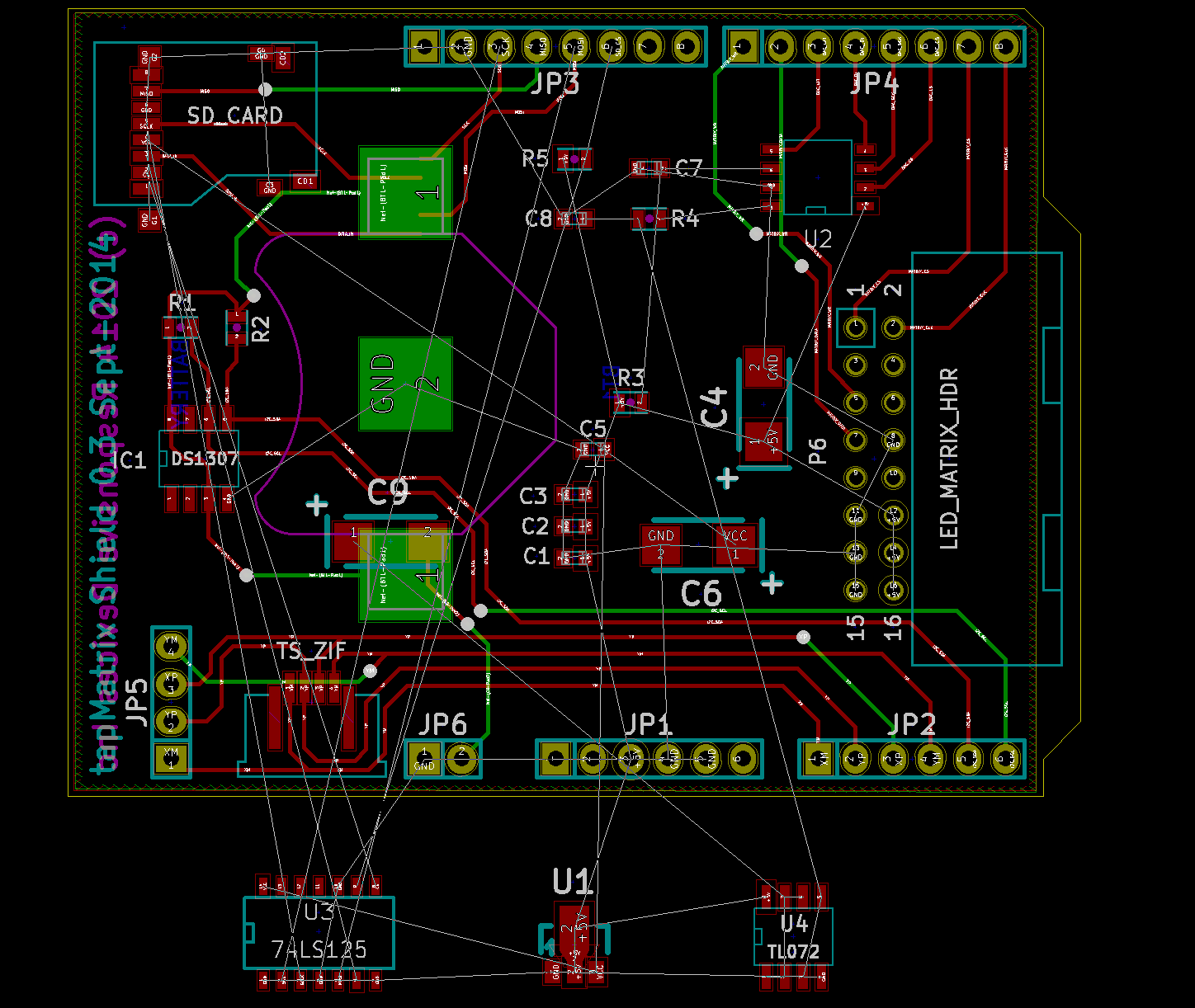Touchscreen Alarm Clock
Network connected touchscreen LED matrix alarm clock
Network connected touchscreen LED matrix alarm clock
To make the experience fit your profile, pick a username and tell us what interests you.
We found and based on your interests.
Previously, I've built this project using an Arduino UNO + Adafruit Wave Shield + Macetech Chronodot + Sure Electronics 16x32 bicolor LED matrix + Fujitsu 4-wire resistive touchscreen.
Current goal: Smash the Wave Shield and Chronodot components into one Arduino-compatible shield, along with the connectors for the LED matrix and touchscreen.
Repo: All details on GitHub for anyone that's curious: https://github.com/cbonsig/openclock
Status: I've tried to translate the thru-hole Wave Shield components into their SMD equivalents, reroute created a schematic in KiCad, did a 2-layer board layout, OSH-Park'ed the board, assembled the components, and found three footprint snafus. So I've revised the schematic and BOM, and I'm working on the revised layout. Before I go crazy, this would be a good time for a peer review...
The BOM and Schematic are on a Google spreadsheet here:
Any comments or suggestions will be greatly appreciated! Especially for:
- the large capacitors (C4/C6C9) - would SMD aluminum cans be better?
- the LDO 3.3V regulator (U1) - not sure if this is a good choice, or if I need to worry about heat, or something else that I'm not thinking about.
- the opamp (U4) - I was guessing here, hope this is reasonable.
Finally, my torn-up layout this pictured below... Before I rearrange and reroute things, if there's anything else that I should think about, now would be a good time.

Create an account to leave a comment. Already have an account? Log In.
This is fantastic! My efforts have gone into hibernation in the last few years, as other aspects of life have kept my quite busy... Hoping to pick up this thread again in the not too distant future, and I look forward to incorporating the improvements you have suggested! Thanks for sharing.
Become a member to follow this project and never miss any updates
By using our website and services, you expressly agree to the placement of our performance, functionality, and advertising cookies. Learn More
Hi Craig,
Your clock inspired me to start my own project (https://hackaday.io/project/93650-better-alarm-clock/). I'll only roughly base myself on your design. I want to make it very cheap and modular.
* LED matrices will be modular, so they can be reused in other projects. The BoM cost for one 8x8 module with backpack would be under €2 (in quantities <10).
* STM32 BluePill instead of AVR. The STM32 has a built in RTC, can be debugged in circuit, is faster, cheaper (€1.62), has more memory...
* Sunrise simulation would be nice. It's the only good feature on my current Philips clock. That's the only reason I have for not throwing away that clock. A 3W RGB LED would suffice.
* I want to add AA-alkaline cell with MCP1640 booster for backup. These AAs have a lot more energy and are much cheaper than CR2032. When there's a power brownout, I still want to be woken in the morning. A CR2032 might not be able to sound the alarm loud enough.
* Network connectivity would be left out as senior citizens would have trouble to set that up.
* I would make it possible to set different alarm times for every day of the week.
Your question about SMD elcos : these are generally more expensive than radial through hole ones. You have through hole components already. So for PBA manufacturing it won't add much to the cost.